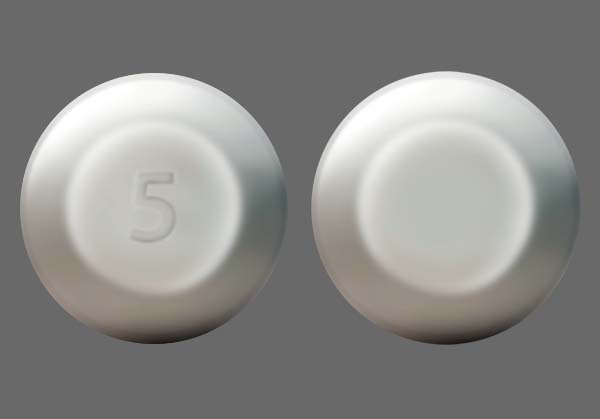Asenapine | Saphris
SAPHRIS is an atypical antipsychotic indicated for (1):
- Schizophrenia
- Acute treatment of manic or mixed episodes associated with Bipolar I Disorder as monotherapy or adjunctive treatment to lithium or valproate
Do not swallow tablet. SAPHRIS sublingual tablets should be placed under the tongue and left to dissolve completely. The tablet will dissolve in saliva within seconds. Eating and drinking should be avoided for 10 minutes after administration.
Schizophrenia: The recommended dose of SAPHRIS is 5 mg given twice daily. In short term controlled trials, there was no suggestion of added benefit with a 10 mg twice daily dose, but there was a clear increase in certain adverse reactions. If tolerated, daily dosage can be increased to 10 mg twice daily after one week. The safety of doses above 10 mg twice daily has not been evaluated in clinical studies

Bipolar I Disorder
Acute Treatment of Manic or Mixed Episodes:
Monotherapy in Adults: The recommended starting dose of SAPHRIS is 10 mg twice daily. The dose can be decreased to 5 mg twice daily if warranted by adverse effects. The safety of doses above 10 mg twice daily has not been evaluated in clinical trials [see Clinical Studies (14.2)].
Monotherapy in Pediatric Patients: The recommended dose of SAPHRIS is 2.5 mg to 10 mg twice daily in pediatric patients 10 to 17 years of age, and dose may be adjusted for individual response and tolerability. The starting dose of SAPHRIS is 2.5 mg twice daily. After 3 days, the dose can be increased to 5 mg twice daily, and from 5 mg to 10 mg twice daily after 3 additional days. Pediatric patients aged 10 to 17 years appear to be more sensitive to dystonia with initial dosing with SAPHRIS when the recommended escalation schedule is not followed [see Use in Specific Populations (8.4)]. The safety of doses greater than 10 mg twice daily has not been evaluated in clinical trials [see Use in Specific Populations (8.4) and Clinical Pharmacology (12.3)].
Adjunctive Therapy in Adults: The recommended starting dose of SAPHRIS is 5 mg twice daily when administered as adjunctive therapy with either lithium or valproate. Depending on the clinical response and tolerability in the individual patient, the dose can be increased to 10 mg twice daily. The safety of doses above 10 mg twice daily as adjunctive therapy with lithium or valproate has not been evaluated in clinical trials.
If SAPHRIS is used for extended periods in bipolar disorder, the health care provider should periodically re-evaluate the long-term risks and benefits of the drug for the individual patient.
—–INDICATIONS AND USAGE—–
- See description above.
—–DOSAGE AND ADMINISTRATION—–
- See description above.
—–CONTRAINDICATIONS—–
- Severe hepatic impairment (Child-Pugh C). (8.7, 12.3)
- Known hypersensitivity to SAPHRIS (asenapine), or to any components in the formulation.
—–WARNINGS & PRECAUTIONS—–
- Cerebrovascular Adverse Events: An increased incidence of cerebrovascular adverse events (e.g., stroke, transient ischemic attack) has been seen in elderly patients with dementia-related psychoses treated with atypical antipsychotic drugs. (5.2)
- Neuroleptic Malignant Syndrome: Manage with immediate discontinuation and close monitoring. (5.3)
- Tardive Dyskinesia: Discontinue if clinically appropriate. (5.4) • Metabolic Changes: Atypical antipsychotic drugs have been associated with metabolic changes that may increase cardiovascular/cerebrovascular risk. These metabolic changes include hyperglycemia, dyslipidemia, and weight gain. (5.5)
- Hyperglycemia and Diabetes Mellitus: Monitor patients for symptoms of hyperglycemia including polydipsia, polyuria, polyphagia, and weakness. Monitor glucose regularly in patients with, and at risk for diabetes. (5.5)
- Dyslipidemia: Undesirable alterations have been observed in patients treated with atypical antipsychotics. (5.5)
- Weight Gain: Patients should receive regular monitoring of weight. (5.5)
—–WARNINGS & PRECAUTIONS—–
- Hypersensitivity Reactions: Hypersensitivity reactions, including anaphylaxis and angioedema, have been observed. (5.6)
- Orthostatic Hypotension, Syncope, and Other Hemodynamic Effects: Dizziness, tachycardia or bradycardia, and syncope may occur, especially early in treatment. Use with caution in patients with known cardiovascular or cerebrovascular disease, and in antipsychotic-naïve patients. (5.7)
- Leukopenia, Neutropenia, and Agranulocytosis have been reported with antipsychotics. Patients with a pre-existing low white blood cell count (WBC) or a history of leukopenia/neutropenia should have their complete blood count (CBC) monitored frequently during the first few months of therapy and SAPHRIS should be discontinued at the first sign of a decline in WBC in the absence of other causative factors. (5.8)
- QT Prolongation: Increases in QT interval; avoid use with drugs that also increase the QT interval and in patients with risk factors for prolonged QT interval. (5.9) • Seizures: Use cautiously in patients with a history of seizures or with conditions that lower the seizure threshold. (5.11)
- Potential for Cognitive and Motor Impairment: Use caution when operating machinery. (5.12)
- Suicide: The possibility of a suicide attempt is inherent in schizophrenia and bipolar disorder. Closely supervise high-risk patients. (5.14)
—–ADVERSE REACTIONS—–
Commonly observed adverse reactions (incidence ≥5% and at least twice that for placebo) were (6.1):
- Schizophrenia Adults: akathisia, oral hypoesthesia, somnolence.
- Bipolar Disorder Adults (Monotherapy): somnolence, dizziness, extrapyramidal symptoms other than akathisia, increased weight.
- Bipolar Disorder Pediatric Patients (Monotherapy): somnolence, dizziness, dysgeusia, oral paresthesia, nausea, increased appetite, fatigue, increased weight.
- Bipolar Disorder Adults (Adjunctive): somnolence, oral hypoesthesia.
—–DRUG INTERACTIONS—–
- Antihypertensive Drugs: SAPHRIS may cause hypotension. (5.7, 7.1, 12.3)
- Paroxetine (CYP2D6 substrate and inhibitor): Reduce paroxetine by half when used in combination with SAPHRIS. (7.1, 12.3)
—–USE IN SPECIFIC POPULATIONS—–
- Pregnancy: May cause extrapyramidal and/or withdrawal symptoms in neonates with third trimester exposure. (8.1)
- Pediatric Use: Safety and efficacy in the treatment of bipolar disorder in patients less than 10 years of age, and patients with schizophrenia ages less than 12 years have not been evaluated. (8.4)

